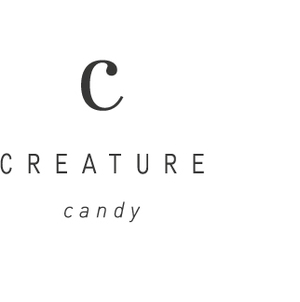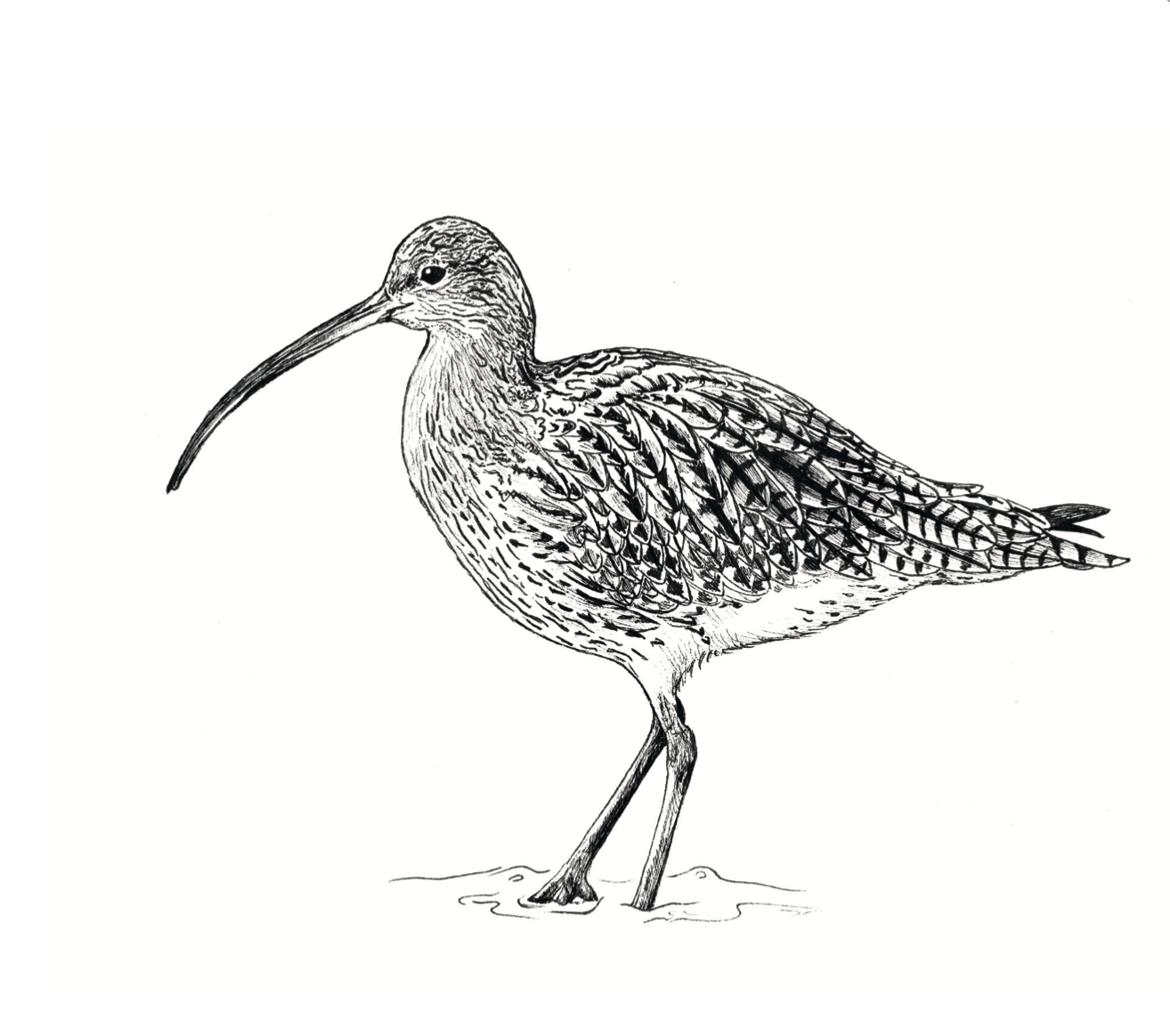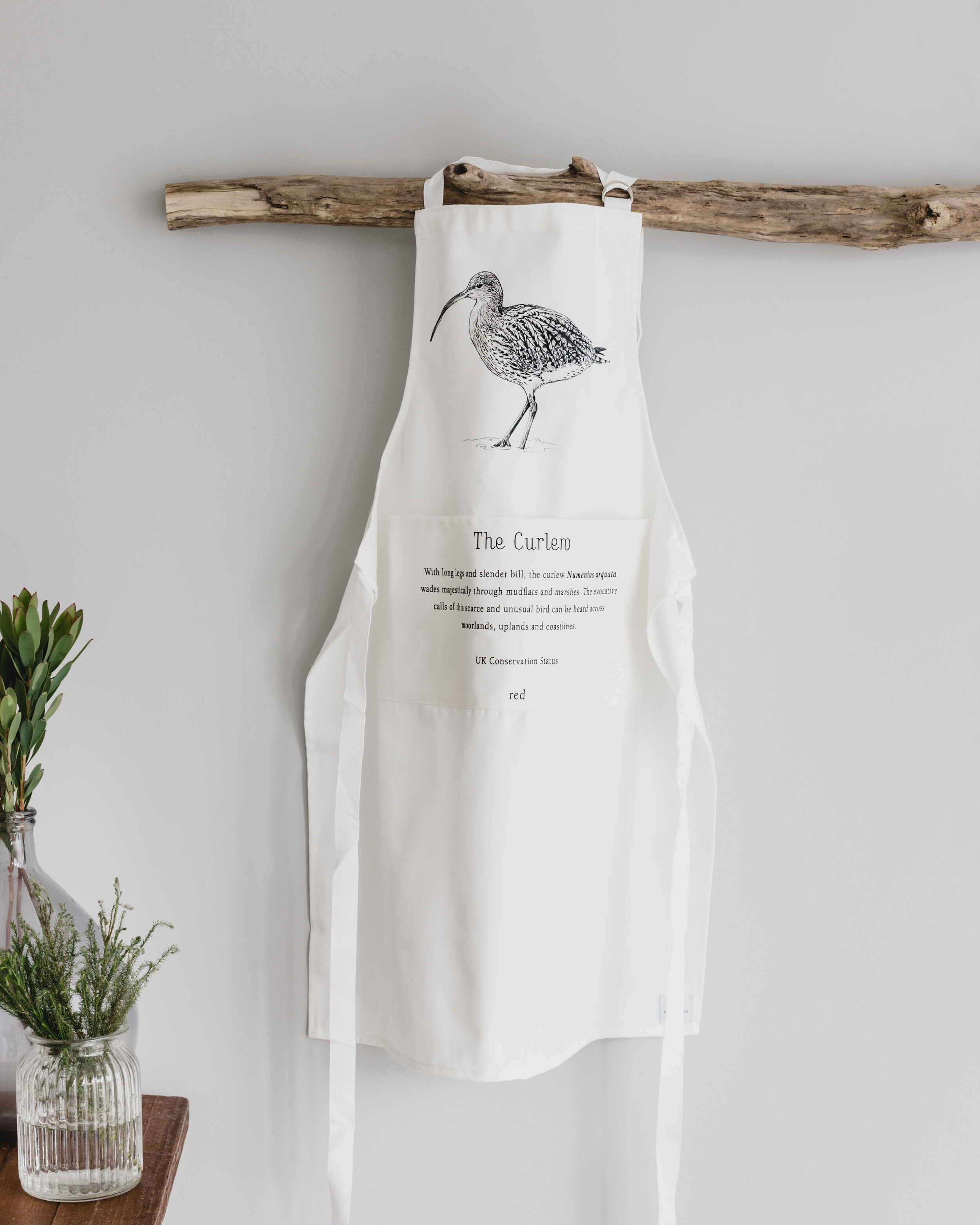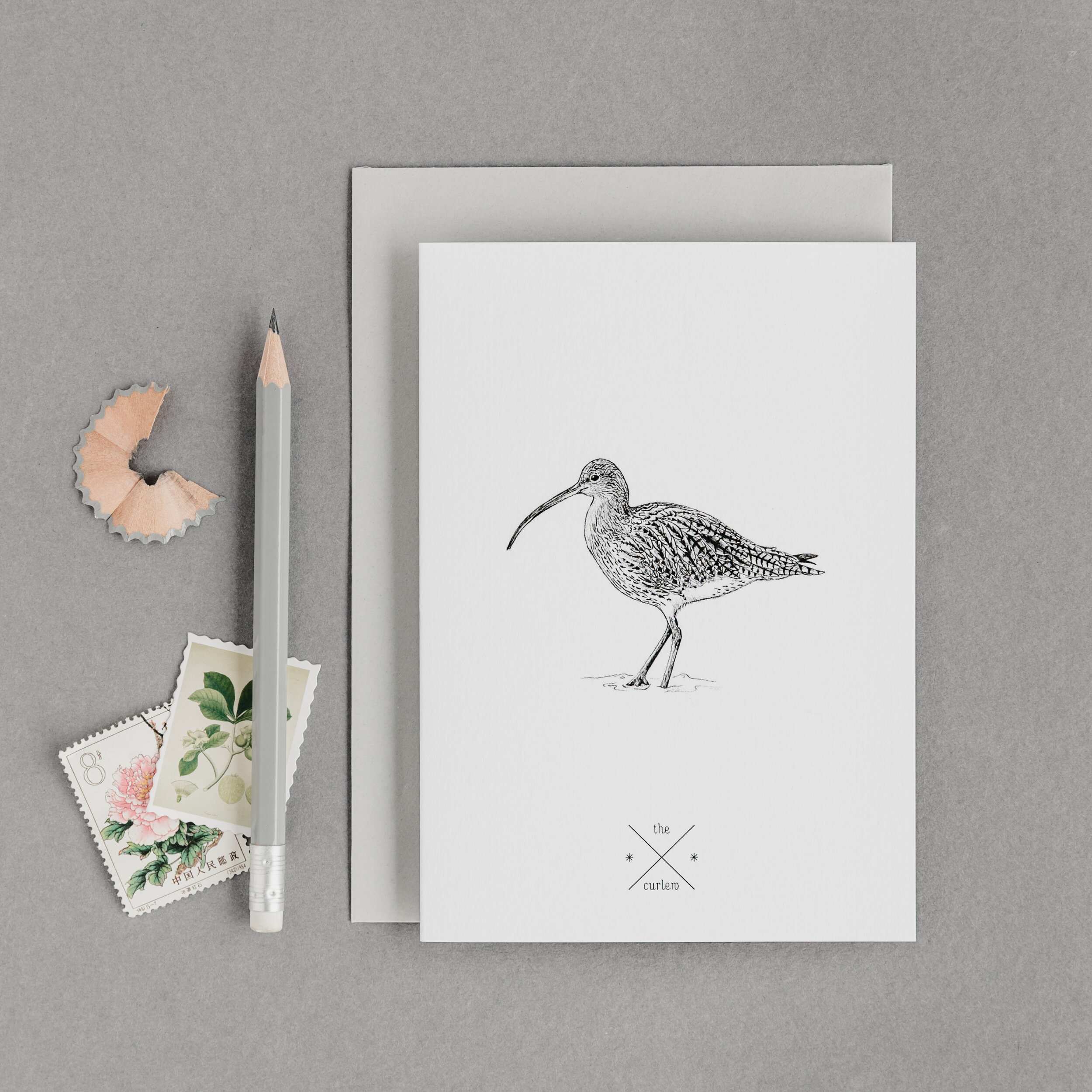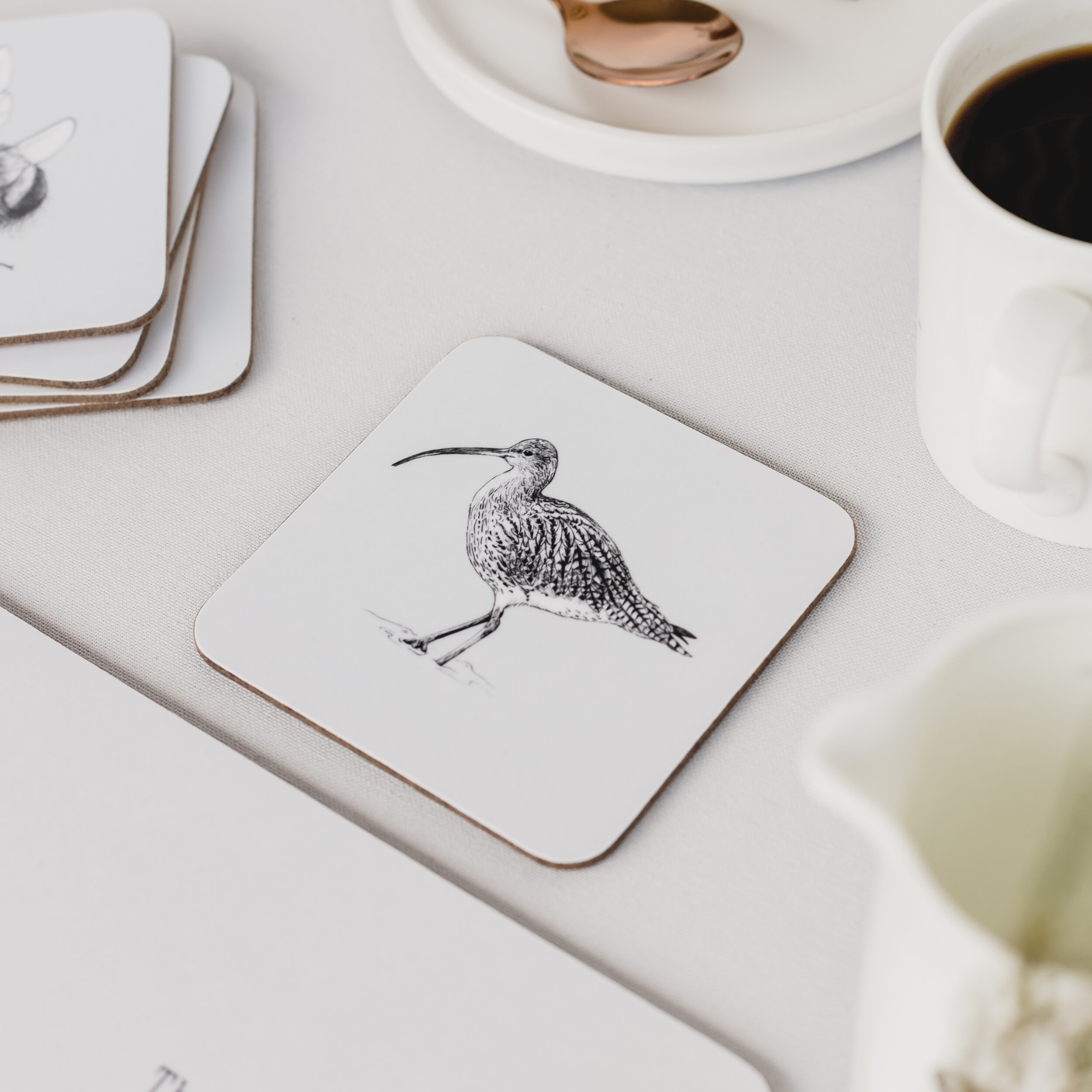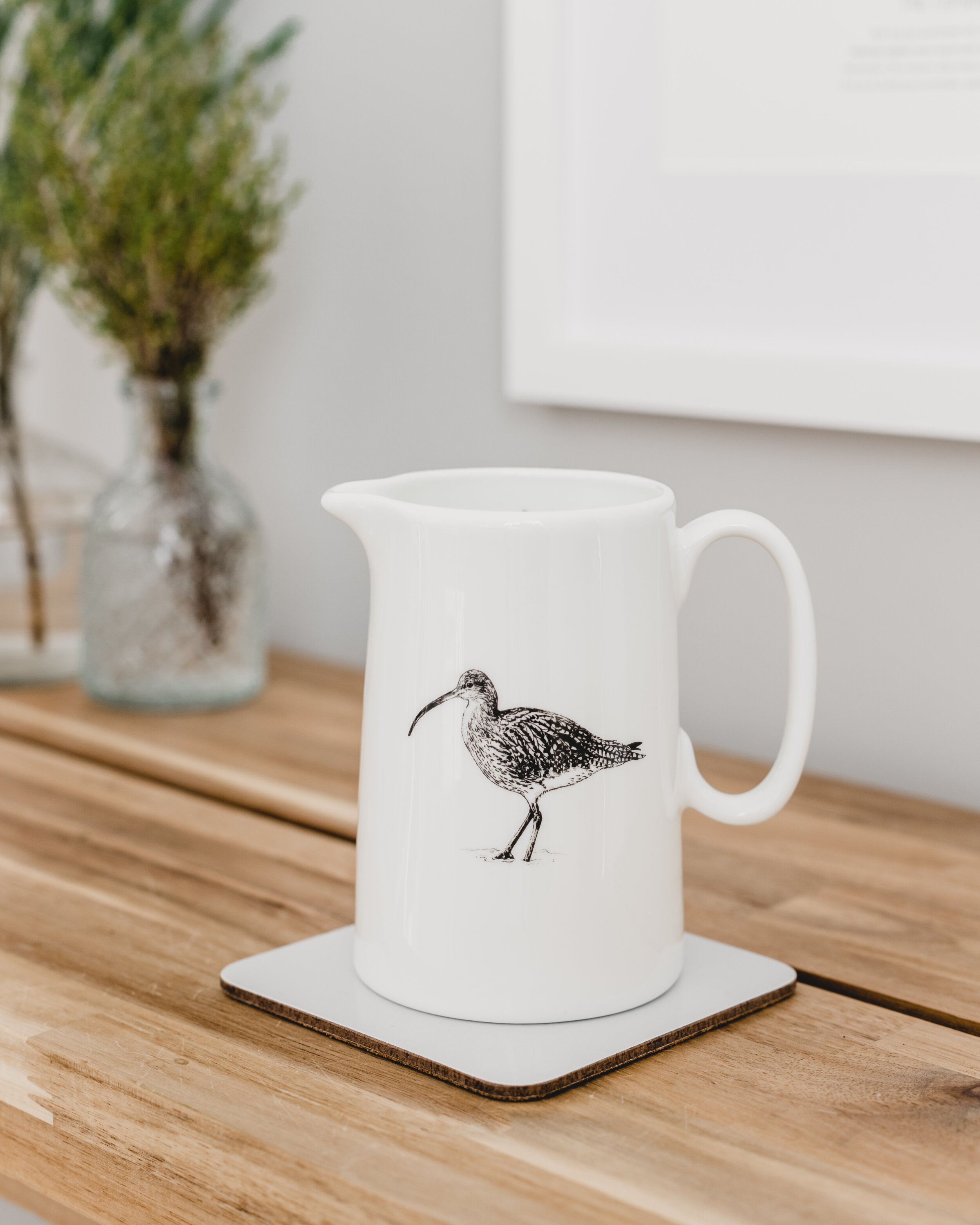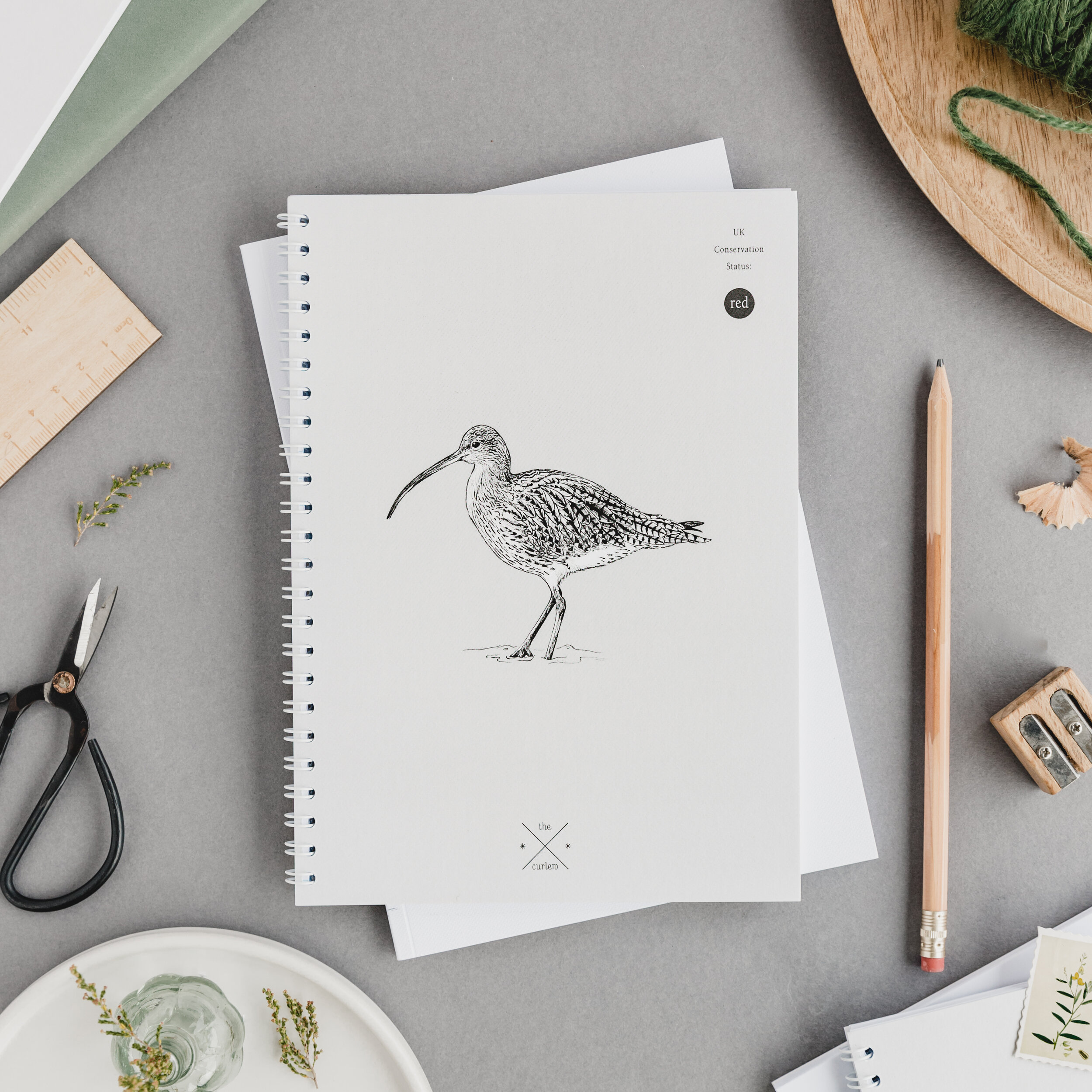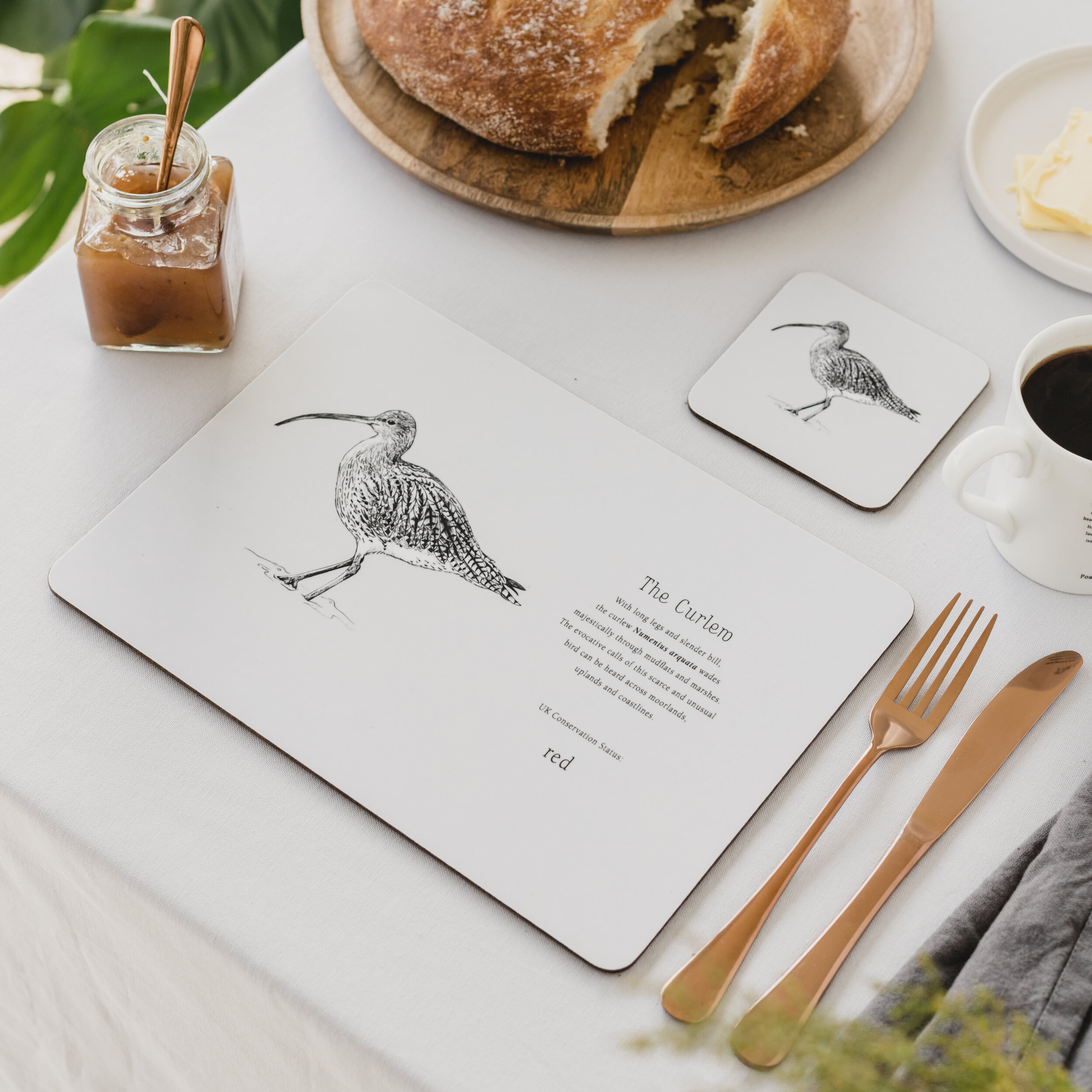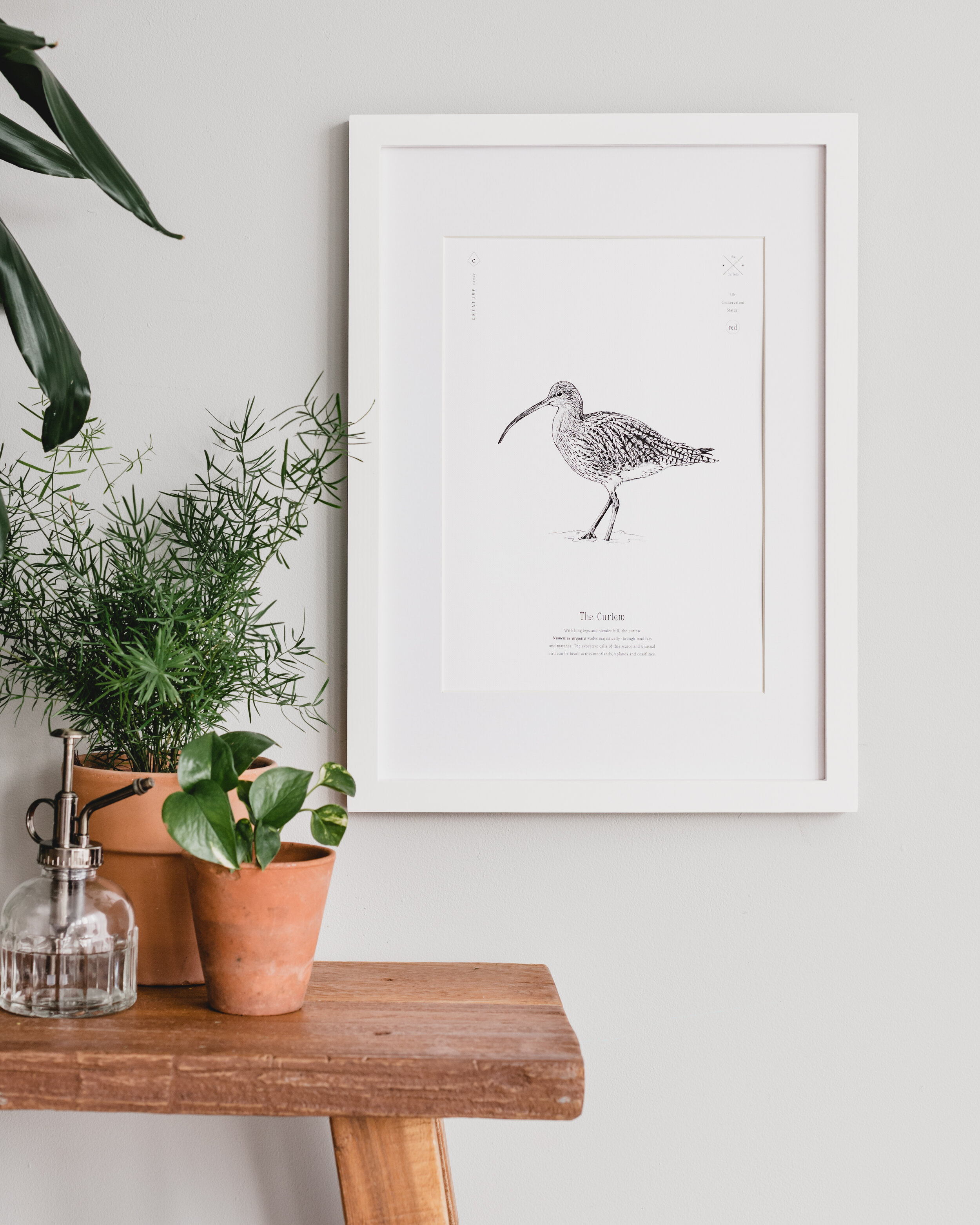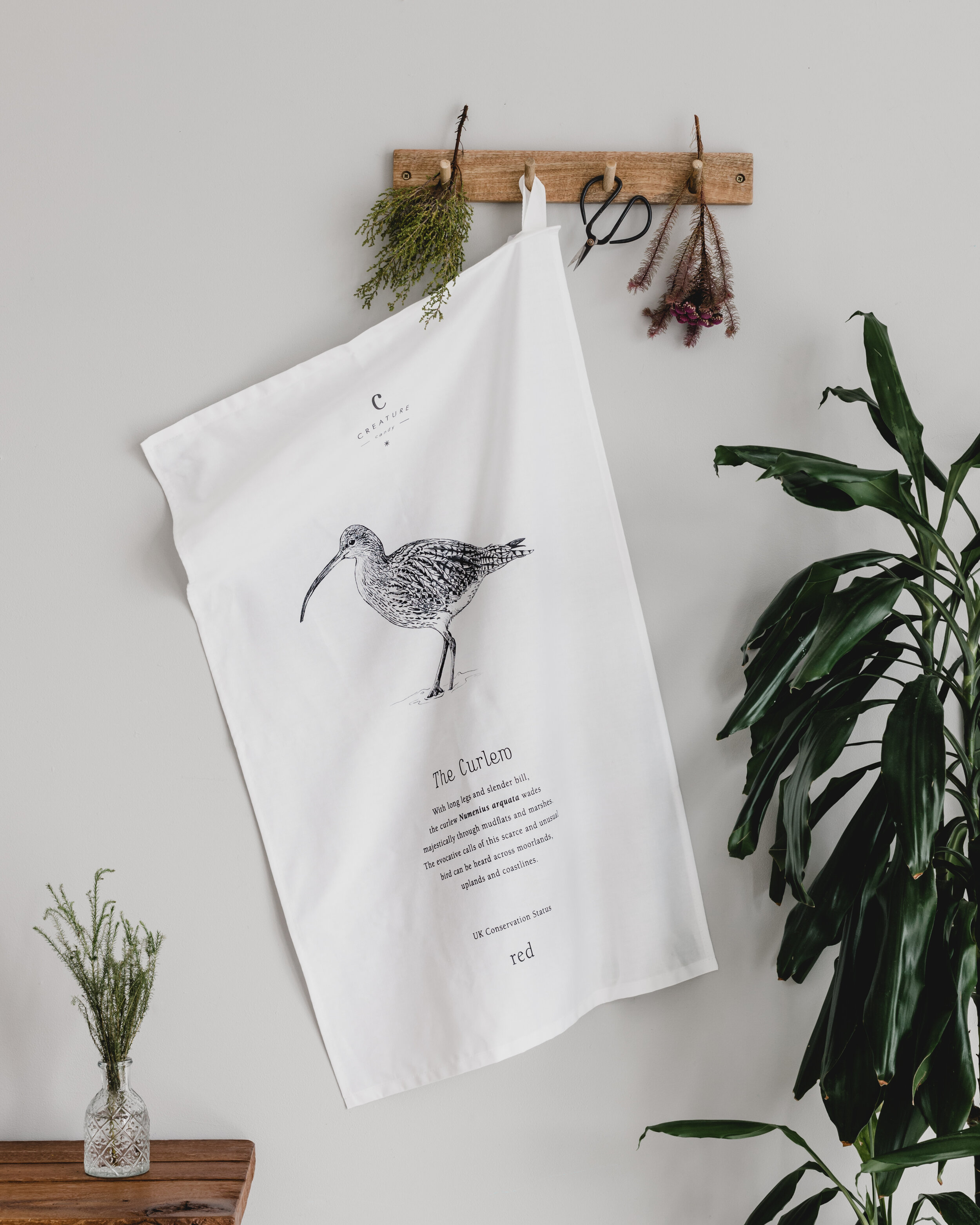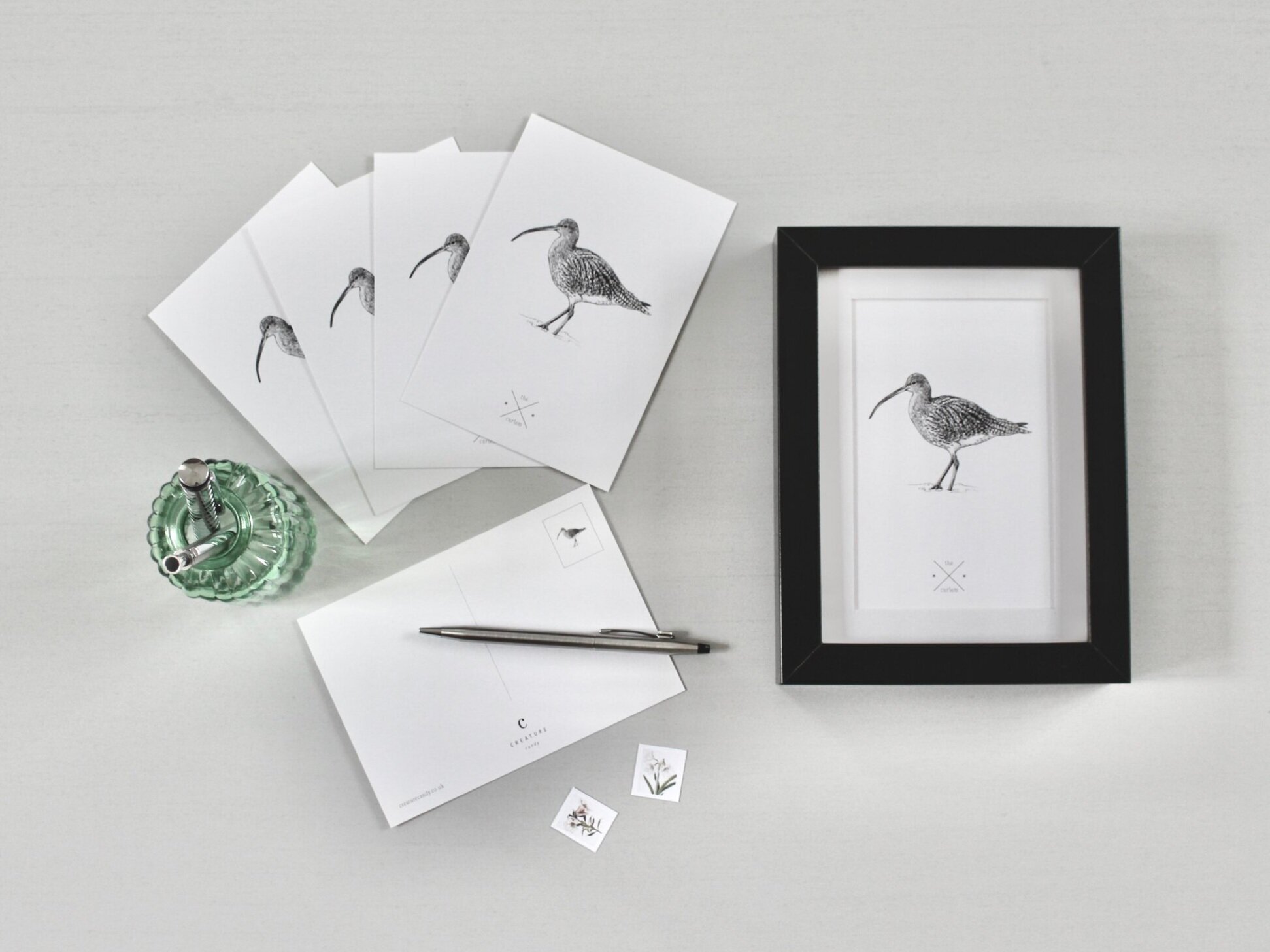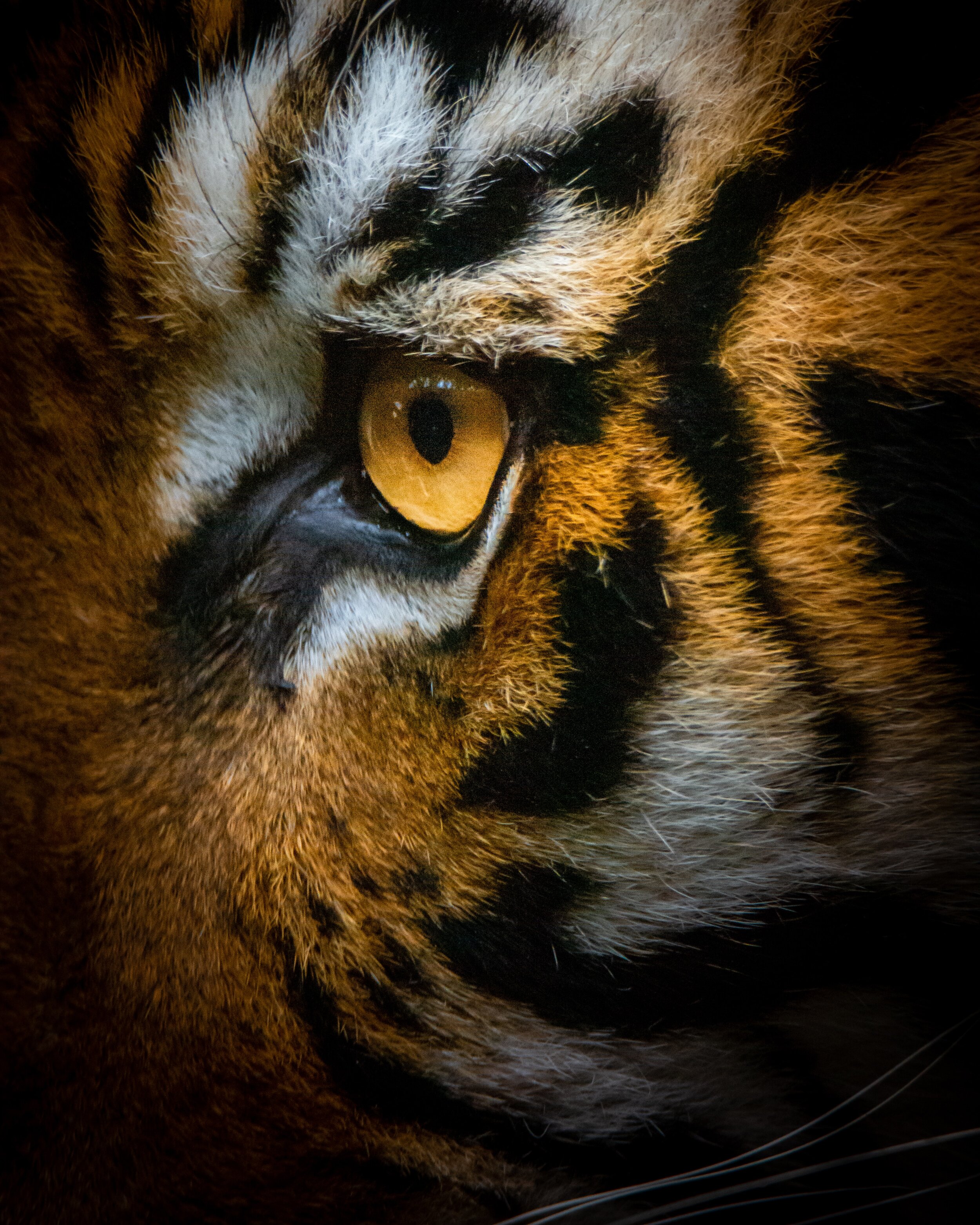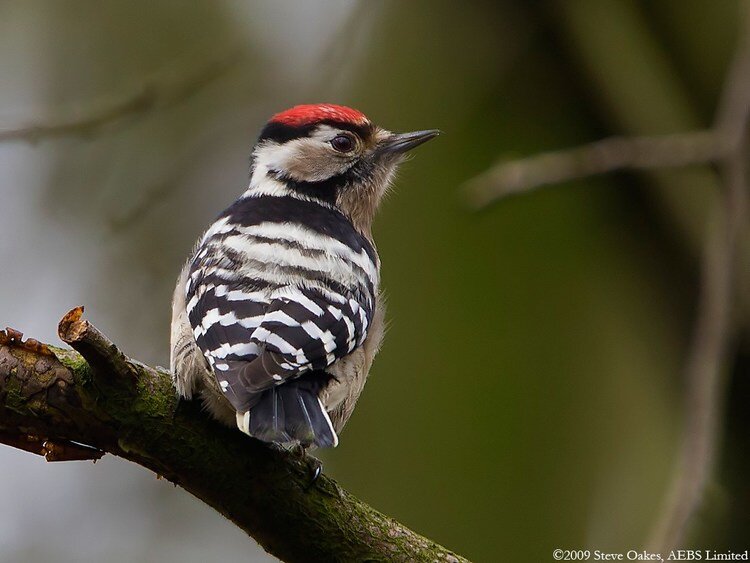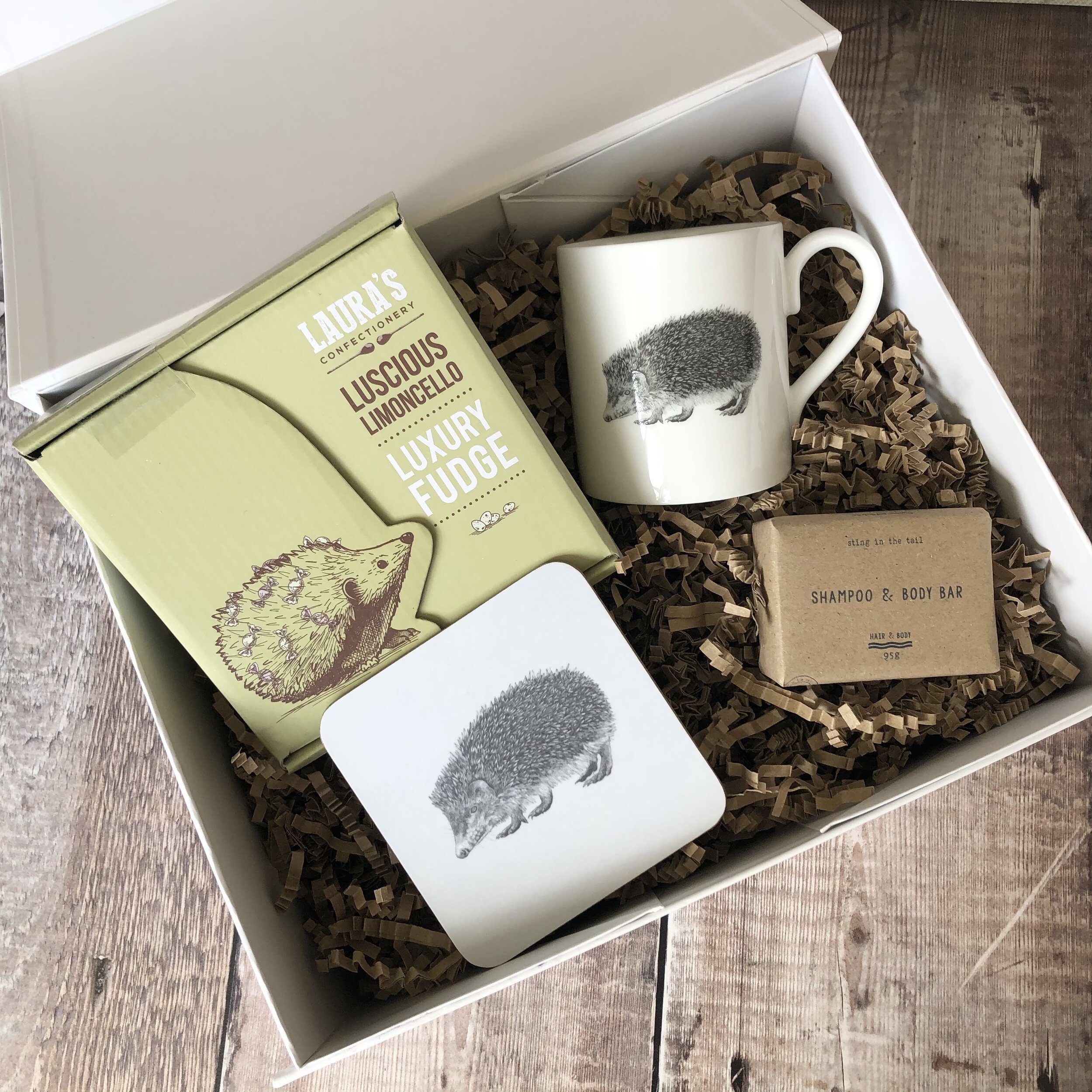By Della Lewandowski.
A familiar sound echoes around the sopping wet moorland. A mottled brown and grey figure begins to rise out from behind the grasses, revealing a distinctive large down-curved bill and long, bluish legs. As the sound gets louder you realise what creature is emitting this onomatopoeic call. It is, of course, the Eurasian Curlew (Numenius arquata); one of the most evocative species of Britain’s uplands and coasts.

Curlews really are a unique sight (and sound) to behold. The combination of the curved bill, long legs, and haunting display call is what makes this large wading bird unmistakeable species. They breed in a number of habitats across the UK from February to July, including wet grasslands, moorlands, farmland and coasts. After July, they journey towards the coast and estuaries where they stay for the winter.
Many see the curlew’s wild presence as the soul of our countryside. They are well known for being a poet’s muse, playing a significant cultural role in art and literature. Despite this, the species is in crisis.
‘A moor without a curlew is like a night without the moon, and he who has not eye for the one and an ear for the other is a mere body without a soul.’ – George Bolam

Photo: Andreas Trepte
The UK’s breeding population is estimated to represent more than 30% of the west European population. Yet there have been worrying declines in the breeding population and since 1970, roughly 65% of our curlews have been lost. Our population is of global importance, but the numbers here are dropping faster than anywhere else in the world.
But what is causing such a major decline?
As curlews like to nest in open spaces in the countryside that are fairly flat and covered in rough damp grass, they are vulnerable to changes in land use. For example in some areas, land has been drained to improve pasture for sheep and cattle, and other land has been converted to forestry, leaving them with less habitat for breeding and rearing young. On top of this, an abundance of predators is also having a major impact on eggs and chicks.

Photo: Polarit
So what can be done to help them?
The Wildfowl and Wetlands Trust (WWT) is the UK’s leading wetland conservation charity. They are working with farmers and landowners, conservationists and communities to prevent the species from becoming just a memory on British shores. In the Severn and Avon Vale where birds are struggling to safely rear their young, they are supporting the farmers with curlews occupying their land in order to protect them.
As part of the Severn and Avon Vale project, WWT are using a method called ‘headstarting’: they take eggs from wild pairs, incubate them, and then rear the chicks until they are able to fly. This keeps them safe during that critical period at the start of their lives. Long term solutions still need to be found that help chicks survive when born in the wild, but the aim of this method is to increase the number of breeding adults that can assist in the recovery of the species. To read more about the project, visit their website.
At Creature Candy we’re doing our bit to raise funds by releasing our very own curlew range, with 10% of the sale price of each product being donated to WWT. The range includes: greetings cards, prints, postcards, notebooks, mugs, aprons, tea towels, jugs, placemats and coasters. Take a look at the design and products below, then let us know what you think!

Humboldt penguins are classed as ‘Vulnerable’ on the IUCN list but are listed as ‘Critically Endangered’ in Peru. There has been a huge overall drop in numbers of the past 100 years, where Humboldts originally were estimated to be in numbers of almost one million and have since dropped to only 30,000 individuals.
One of our new designs is the lesser spotted woodpecker Dendrocopos minor. I'm sure some of you are not very familiar with this bird and that is one the main reasons we have chosen it for our new designs. To raise awareness and funds for it's much needed conservation.
